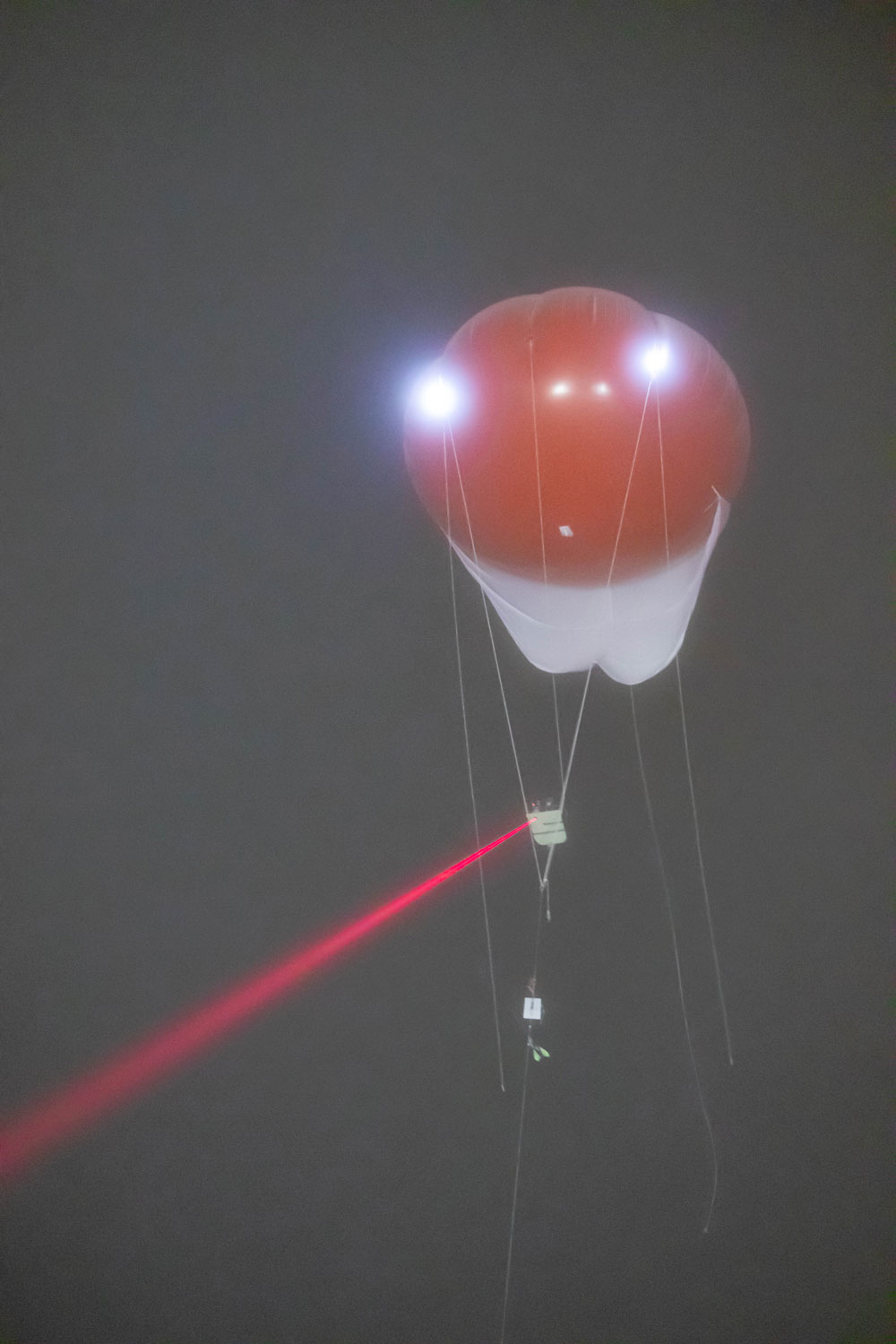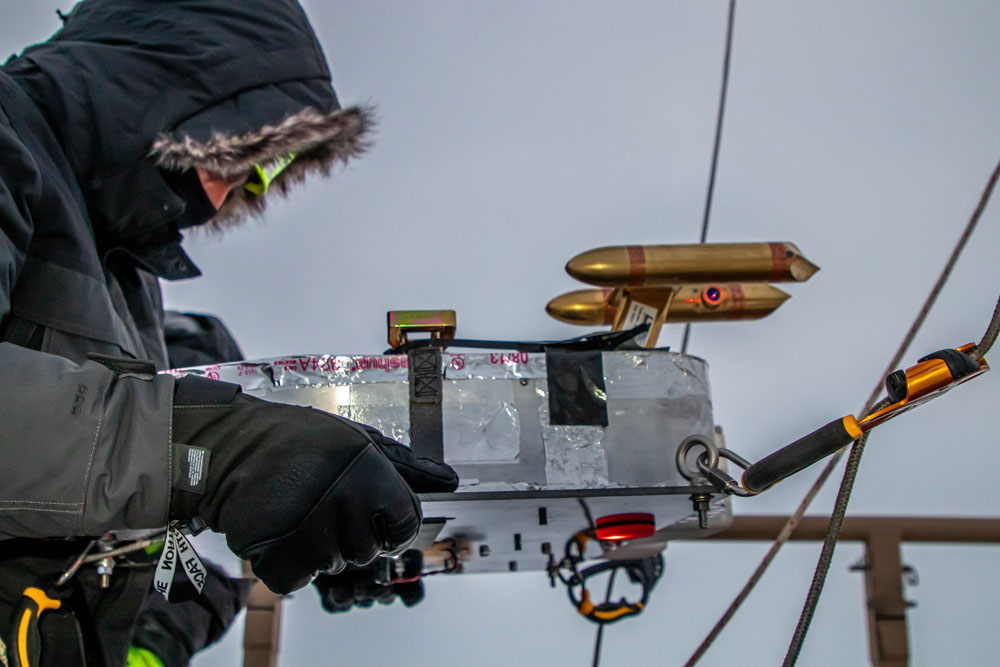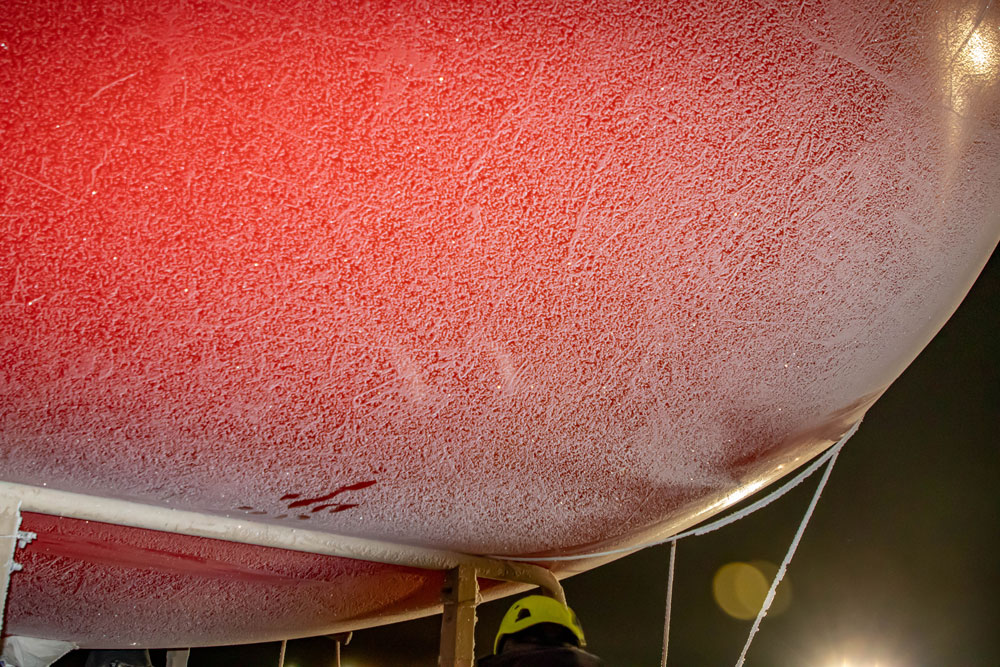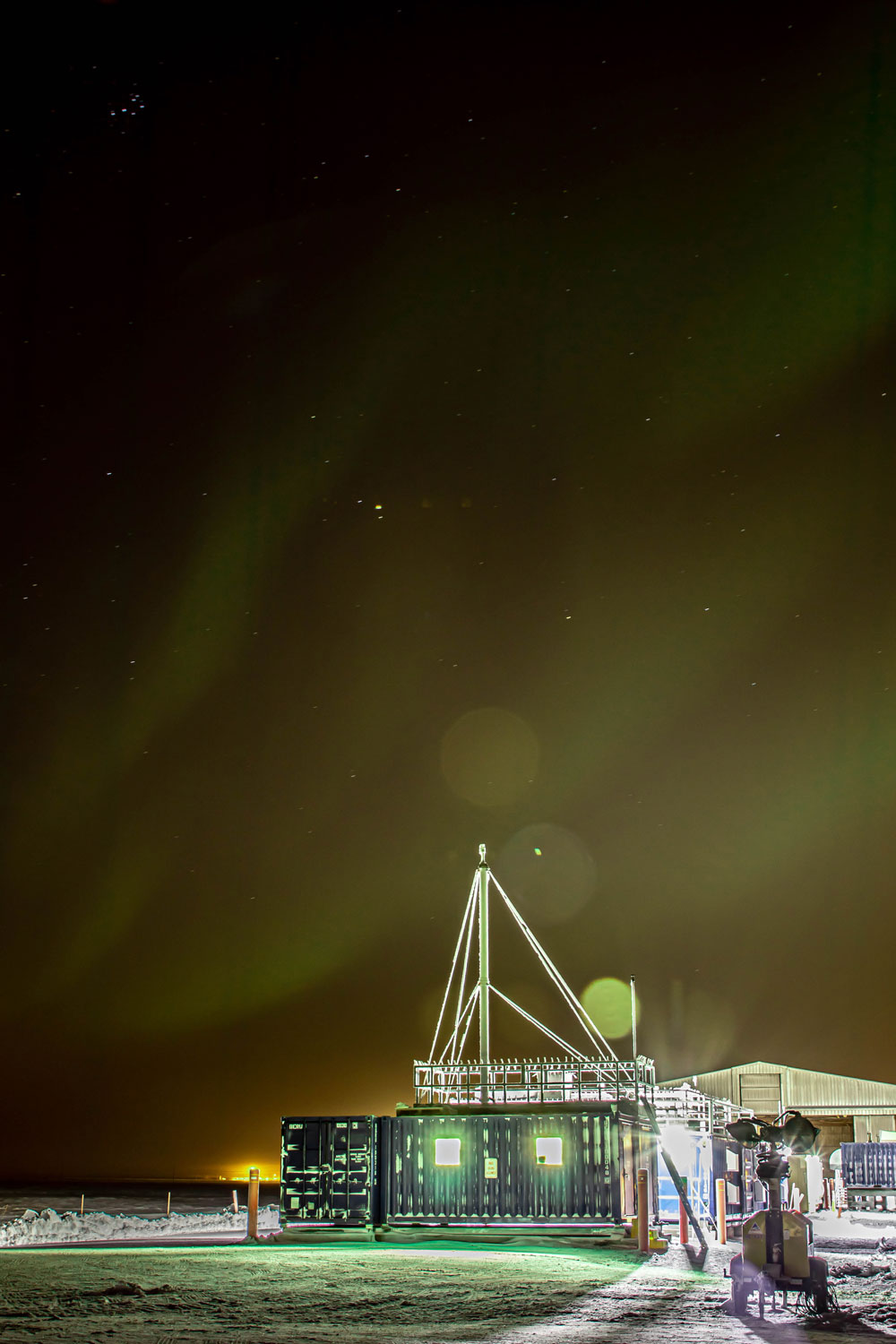Patience rewards one delayed Alaskan field campaign studying ice fog
Editor’s note: This is the first article in a series looking at how ARM has continued to support atmospheric science during the pandemic.

The onset of the COVID-19 pandemic in 2020 brought about rapid changes for people and organizations around the globe, including the Atmospheric Radiation Measurement (ARM) user facility. An ARM field campaign at Oliktok Point, Alaska, was set to begin in March—the same month that the World Health Organization officially declared the pandemic.
Between the pandemic and springtime warming in Alaska, the campaign, which focused on ice fog, would have to wait.
Determined to continue helping users achieve their scientific goals during the pandemic, ARM worked to ensure smooth and safe field operations at its sites.
Eight months later, the Ice Fog Field Experiment at Oliktok Point (IFFExO) proceeded, albeit with fewer people onsite than originally planned. A six-member team from Sandia National Laboratories in New Mexico oversaw instrumented tethered balloon system (TBS) flights in ice fog. The third ARM Mobile Facility (AMF3)—also managed by Sandia—supported the campaign with its continuous surface and remote-sensing measurements.
November turned out to be a good month for IFFExO. Ice fog consists of ice crystals suspended in the air, so it must be quite cold to form—starting around minus 10 degrees Celsius (14 degrees Fahrenheit). It is different from freezing fog, which happens around zero degrees C (32 degrees F) and contains water droplets that freeze onto surfaces.
Into the Fog
Ice fog is important to study because of where it occurs. The Arctic is warming twice as fast as the rest of the world. This makes it crucial to understand small-scale conditions associated with large-scale weather systems that determine the region’s energy budget. At the Earth’s surface, ice fog can act like a blanket, holding in heat and making it harder for incoming solar energy to get through.
Ice fog involves two modes of phase change—ice to vapor and ice to water—and those transitions require a lot of energy.
“Knowing about ice fog, we believe, will give us a very good leg forward in modeling of arctic climate,” says IFFExO’s lead principal investigator, Harindra Joseph Fernando, a professor at the University of Notre Dame.
Another key reason for studying ice fog—a major hazard to ship and air travel—is to improve weather forecasting for visibility.

Past campaigns that explored ice fog included ARM’s 2008 Indirect and Semi-Direct Aerosol Campaign (ISDAC) around Barrow (now Utqiaġvik), Alaska, and the 2010–2011 Fog Remote Sensing and Modeling-Ice Fog (FRAM-IF) project in Canada’s Northwest Territories.
IFFExO co-investigator Ismail Gultepe, who is affiliated with Ontario Tech University, Environment and Climate Change Canada, and Notre Dame, led FRAM-IF.
A key difference during IFFExO is that in addition to flying straight across the ice fog layer, the TBS moved up and down within the layer to obtain microphysical, aerosol, and meteorological data.
IFFExO featured the use of the Gondola, a guest instrument platform from Ontario Tech University that carries cloud droplet and backscatter cloud probes. Together, these probes measure the size and concentration of droplets and ice crystals from 1 micron to 75 microns—at most, the typical thickness of a human hair.
For ice crystal conditions, the probes provide bulk microphysical properties such as the total number concentration, liquid/ice water content, and effective size of droplets and ice crystals. IFFExO marked the Gondola’s first TBS flights in ice fog.
Gultepe and Fernando are involved in an Office of Naval Research project called C-FOG, examining coastal fog, that greatly facilitated Notre Dame’s participation in IFFExO.
A (Virtual) Front-Row Seat

With limitations on who could be at the Oliktok site, technology helped researchers spread out worldwide stay connected to the campaign.
“We had to postpone and be physically distanced, but the ARM people were so gracious to do the experiment and get us involved from Zoom,” says Fernando.
IFFExO team members consulted virtually with Oliktok personnel on whether conditions were right for flying, using observational, modeling, and satellite data.
On one hand, flights in the fog were challenging because ice quickly built up on the equipment, says Dari Dexheimer, a Sandia atmospheric scientist who manages ARM’s tethered balloon flights. The upside, she adds, was that there were several days in a row with light wind and low clouds, “with cloud bases of 100 meters (about 328 feet) and tops of 300 meters (984 feet).”
From November 12 to 20, the TBS accrued 23 flight hours in ice fog. Researchers were particularly overjoyed that ice fog events occurred 30% of the time—higher than the 20% during FRAM-IF.
In addition to the Gondola, guest instruments on the TBS during IFFExO included:
- the automated Size- and Time-resolved Aerosol Collector (STAC), an impactor that collected particles for analysis by Swarup China at Pacific Northwest National Laboratory in Washington state
- a time-resolved aerosol sampler from Jessie Creamean at Colorado State University to measure the chemical composition of ice-nucleating particles
- a video ice particle sampler from Carl Schmitt at the University of Alaska, Fairbanks, to measure ice particle maximum dimension, width, area, and aspect ratio
- a cloud droplet measurement system (CDMS) from Andrei Vakhtin at Mesa Photonics in New Mexico to measure droplet size distribution.

“Preliminary results suggested that the Gondola and CDMS accurately detected small fog particles and further validations are needed for their spectral measurements because of their different measurement thresholds for particle sizes,” says Gultepe.
Proposals are underway to secure more funding for TBS and AMF3 data analysis and model evaluation, validation, and improvements. Overall, IFFExO generated data on four ice fog cases, plus a case of blowing snow that researchers plan to investigate.
Finish With a Flourish
IFFExO has the distinction of being the last ARM campaign planned at Oliktok before AMF3 ends operations there in June 2021.
AMF3, which has operated at Oliktok since 2013, will be readied for a new extended-term deployment scheduled to begin in 2023 in the Southeastern United States.
In 2004, ARM started conducting TBS flights at Oliktok in restricted airspace that allowed for in-cloud flights. Routine ARM TBS flights began there in 2015.
Now, the balloons have moved on.
“We pulled out all of the TBS equipment when we left, and everything is back at Sandia for now,” says Dexheimer.
This trip to Oliktok included a memorable first for Dexheimer, a frequent traveler to Alaska since 2015.
“I’ve never gotten to see the Northern Lights on any trip to Oliktok Point. And then, the last time we were there, we saw a really great Northern Lights display,” says Dexheimer. “It was as if the Arctic was finally letting its guard down for us.”
# # #Author: Katie Dorsey, Staff Writer, Pacific Northwest National Laboratory
ARM is a DOE Office of Science user facility operated by nine DOE national laboratories, including Sandia National Laboratories.

